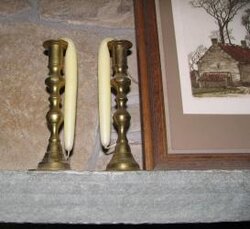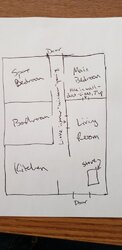I'm hoping I can get some guidance here - I don't know much about wood stoves and I've started to do some research but I'd love to get some experts to point me in the right direction.
My mom may need a new wood stove - her current stove is the primary heat source for her ~800 square foot bungalow but she's pretty sure it's on its last legs.
Based on what she's told me and what I've learned here are some more details:
She's looking at a Sedore Canadian, dent and scratch model for $2500 from a vendor near family members who could drive it to her. Seems like a really good price for that model, but I'm worried that might be overkill for what she needs (and ideally we'd spend a lot less than that anyways). I've seen Drolet models recommended here and elsewhere and they seem more reasonably priced - but I don't know if their burn times are long enough?
Thanks in advance for any advice and guidance! Let me know if any other details would be helpful and I can find out...
My mom may need a new wood stove - her current stove is the primary heat source for her ~800 square foot bungalow but she's pretty sure it's on its last legs.
Based on what she's told me and what I've learned here are some more details:
- She needs a stove that can do sustained burns of 8 hours or so (basically she wants to be able to go to bed at night and not get up again to refill the stove until the morning).
- Her current chimney goes out the wall beside the stove (I don't know how long it is, I can't remember how far it continues outside the house - I think the hole in the wall is about 7' above the floor?). I think ideally, if she installs a new stove, she'd get a new chimney that goes straight up through the attic to the roof (I think that might be able to reach 15', which seems like an ideal height for a chimney?).
- The logs she burns can be up to 20-24" so the firebox would need to be big enough for that.
- She had a whole bunch of air sealing + new windows and doors installed last summer/fall, which has really helped keep the heat in.
- Function is way more important than how it looks (you can't see the stove's door from the main living areas, so a glass door or view of the fire isn't essential).
She's looking at a Sedore Canadian, dent and scratch model for $2500 from a vendor near family members who could drive it to her. Seems like a really good price for that model, but I'm worried that might be overkill for what she needs (and ideally we'd spend a lot less than that anyways). I've seen Drolet models recommended here and elsewhere and they seem more reasonably priced - but I don't know if their burn times are long enough?
Thanks in advance for any advice and guidance! Let me know if any other details would be helpful and I can find out...



